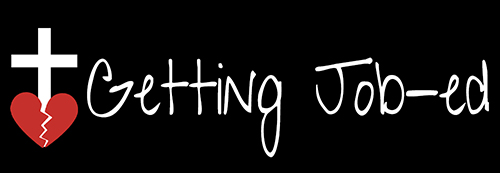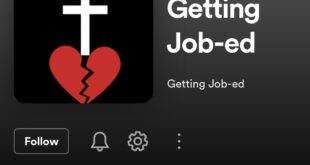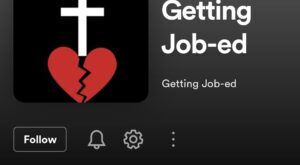We seldom think of needing someone to mediate between us and God. In America, we’re taught that people are generally all good and not really that bad. This shows our lack of understanding of the distance between us and an infinitely holy God. It is understood that Jesus held (and holds) three offices: Prophet, Priest, and King. However, the most important office in regard to the relationship between God and man is Christ’s role as Priest. The following is a paper written for Belhaven University entitled Jesus, Our High Priest. This is part 1 of 2:
***
Throughout Scripture, Jesus Christ is noted as holding three offices: Prophet, Priest, and King. (1) It would be difficult to dispute that the most important office that Christ held (and holds) in relation to mankind is His role as the Priest. The purpose of this paper is to examine how the Old Testament priesthood was pointing forward to Christ’s priesthood, how Christ fulfills the office of priesthood, and briefly discuss how Christ’s office of priesthood transposes to His followers today.
What is a “priest?”
The office of priest could be defined as, “a person who mediates between God and his people so that God will receive them into his special holy presence to grant them his blessing.” (2) The primary role of the priest was to intercede between God and mankind, (3) most commonly by way of making offerings on the people’s behalf. (4) This included taking people’s needs to God but also representing God to the people. (5) The purpose of this mediation was to sanctify the people in order to bring them into the presence of God. (6) Being human themselves, the priests could sympathize and empathize with the people as they interceded and provided sacrifices to God (Exodus 29). (7)
Priesthood Before Aaron
A common misconception is that the priesthood in Scripture began with the Levites and Aaron’s lineage. Scripture states that the function of priests was established long before Aaron as seen in Adam, Noah, Abraham, Melchizedek, Jethro, and Job. (8) Although not explicitly stated, Adam’s role as priest is prevalent in the Garden of Eden. Genesis 2:15 English Standard Version states, “The Lord God took the man and put him in the garden of Eden to work it and keep it.” The Hebrew words “avad” and “shamar” used in Genesis 2:15 are the same words used in Numbers 3 to describe the Levitical/priestly duties for the Tabernacle service. (9) Adam and the Levites share similar priestly duties, especially in view that the Tabernacle and Temple were copies or shadows of the reality of the Garden of Eden. (10) Noah performed sacrifices in Genesis 8:20 as did Abraham in Genesis 15:9-21. Melchizedek is noted to be the priest-king in Genesis 14:17-21. Job makes intercession for his family through sacrifices in Job 1:4-5. Jethro, Moses’ father-in-law, is noted to be a priest in Exodus 2:16-22. (11) The concept of a priest interceding with God on behalf of the people was well established before the Aaronic priesthood.
Why was a priest needed?
In Genesis 2, the office of priesthood with Adam did not include the sacrifices as the creation had not yet been subjected to the Fall. In Genesis 2:17, God stated that the penalty for rebellion is death. Yet in the insurrection of mankind’s rebellion in Genesis 3:6-7, mankind was not outright destroyed. (12) Why? Because a death occurred in Genesis 3:21 that covered the rebellion of mankind. A life (as seen in the use of animal skins in Genesis 3:21) was taken to atone for another life (mankind). (13) Mankind was created in the image of God in order to be His priests ministering on earth (Genesis 1:26-28, Genesis 2:15) yet mankind would now need an intercessor between them and God in order to appease God’s wrath. God Himself would act as the first intercessor (as He provides the animal skins for them in Genesis 3:21), and from here we then see the role of the priest providing sacrifices through Noah, Abraham, Aaron’s lineage, etc. Although there are other duties associated with the priesthood in Scripture, the most important function of the priesthood is providing an atoning sacrifice to allow a relationship between God and mankind to exist. (14)
The Aaronic Priesthood
The Aaronic/Levitical priesthood was instituted after the Israelites were rescued from Egypt and then conditions were presented in order for Yahweh to be present with His people. The Aaronic priesthood represented all of Israel to God. (15) The Tabernacle, and later the Temple, represented the presence of God with His people. (16) The priest’s duties, garments (Exodus 28), rituals, etc. represented the conditions in order for God to be present with His people (Leviticus 6-9, 16). (17) The rituals and ordinances of the priests were to show how serious God is about His holiness and the consequences of lack of reverence (Leviticus 10). (18) The ministry of the priests could be summarized as guarding the temple and assisting in worship, (19) blessing the people, (20) teaching the Law (which overlapped with the duty of the prophets), (21) with the most important duty which was offering sacrifice. (22)
Atoning Sacrifice
As stated before, the most important function of the priesthood is providing an atoning sacrifice to allow a relationship between God and mankind to exist. (23) The priests would first have to atone for their own sins by laying hands on the bull in order to project their sins onto the sacrifice in order for the animal to die in their place. (24) The priest would have to atone for his own sins before presenting sacrifices for others (Leviticus 16:11). The priest would then sacrifice a goat on behalf of the sins of the people (Leviticus 16:15-19). (25) The high priest would enter the Holy of Holies once per year to offer the atoning sacrifice in the presence of God in front of the Ark of the Covenant. (26) The blood from the sacrifice was placed on the Mercy Seat, over the Law, so that the blood would cover the law that was broken. (27) The living goat would be presented to bear the sins of the high priest and the people of Israel and would be released to symbolically show the removal of sins from the people away from the presence of God (Leviticus 16:20-22).
Yet this was not sufficient to take away the sins of the people indefinitely. Hebrews 10:4 ESV states, “For it is impossible for the blood of bulls and goats to take away sins.” In Israel’s failure to uphold the Torah, Yahweh declares that the vain acts of sacrifices were despicable to Him in Isaiah 1:11. All of the Old Testament priestly ordinances were pointing forward to a greater reality- they were but shadows of a reality that was to be revealed in the coming of Christ (Hebrews 8:4-5). (28) These actions of the priest served as a copy of the heavenly reality that was to be revealed in Jesus’ fulfillment of the office of priesthood. (29)
In the next article, we’ll look at Jesus’ role as our High Priest.
Footnotes
1. Richard Belcher Jr., Prophet, Priest, and King: The Roles of Christ in the Bible and Our Roles Today,
(New Jersey, P&R Publishing Company,2016), 1.
2. Third Millenium Ministries, “We Believe in Jesus Lesson 4: The Priest,” accessed June 2, 2023, https://thirdmill.org/seminary/lesson.asp/vid/131
3. R.C. Sproul, “The Father as Prophet, Priest, and King,” accessed June 1, 2023, https://www.
ligonier.org/learn/conferences/holiness-01-national/the-father-as-prophet-priest-and-king
4. Third Millenium Ministries, “We Believe in Jesus Lesson 4: The Priest.”
5. Belcher, Prophet, Priest, and King: The Roles of Christ in the Bible and Our Roles Today, 60.
6. Wayne Grudem, Systematic Theology: An Introduction to Biblical Doctrine, 2nd ed., (Michigan, Zondervan, 2020) 769.
7. John Frame, Systematic Theology: An Introduction to Christian Belief, (New Jersey, P&R Publishing Company, 2013) 907.
8. Third Millenium Ministries, “We Believe in Jesus Lesson 4: The Priest.”
9. Belcher, Prophet, Priest, and King: The Roles of Christ in the Bible and Our Roles Today, 73.
10. Third Millenium Ministries, “We Believe in Jesus Lesson 4: The Priest.”
11. Third Millenium Ministries, “We Believe in Jesus Lesson 4: The Priest.”
12. R.C. Sproul, “Question and Answers #2: Baucham, Nichols, Sproul, Sproul Jr., and Thomas,”
accessed June 10, 2023, https://www.youtube.com/watch?v=drtmCuUJdwM
13. Belcher, Prophet, Priest, and King: The Roles of Christ in the Bible and Our Roles Today, 59.
14. Sproul, “The Father as Prophet, Priest, and King.”
15. Belcher, Prophet, Priest, and King: The Roles of Christ in the Bible and Our Roles Today, 65.
16. Belcher, Prophet, Priest, and King: The Roles of Christ in the Bible and Our Roles Today, 64.
17. Belcher, Prophet, Priest, and King: The Roles of Christ in the Bible and Our Roles Today, 64.
18. Third Millenium Ministries, “We Believe in Jesus Lesson 4: The Priest.”
19. Belcher, Prophet, Priest, and King: The Roles of Christ in the Bible and Our Roles Today, 71-73.
20. Belcher, Prophet, Priest, and King: The Roles of Christ in the Bible and Our Roles Today, 79.
21. Belcher, Prophet, Priest, and King: The Roles of Christ in the Bible and Our Roles Today, 77.
22. Belcher, Prophet, Priest, and King: The Roles of Christ in the Bible and Our Roles Today, 76.
23. Sproul, “The Father as Prophet, Priest, and King.”
24. Belcher, Prophet, Priest, and King: The Roles of Christ in the Bible and Our Roles Today, 68.
25. Belcher, Prophet, Priest, and King: The Roles of Christ in the Bible and Our Roles Today, 68-69.
26. Belcher, Prophet, Priest, and King: The Roles of Christ in the Bible and Our Roles Today, 82.
27. Third Millenium Ministries, “We Believe in Jesus Lesson 4: The Priest.”
28. John Piper, “Our High Priest is the Son of God Perfect Forever,” accessed June 07, 2023,
https://www.desiringgod.org/messages/our-high-priest-is-the-son-of-god-perfect-forever
29. Belcher, Prophet, Priest, and King: The Roles of Christ in the Bible and Our Roles Today, 83.
Bibliography
Belcher Jr., Richard, Prophet, Priest, and King: The Roles of Christ in the Bible and Our Roles
Today, (New Jersey, P&R Publishing Company,2016).
Frame, John, Systematic Theology: An Introduction to Christian Belief, (New Jersey, P&R
Publishing Company, 2013).
Grudem, Wayne, Systematic Theology: An Introduction to Biblical Doctrine, 2nd ed., (Michigan,
Zondervan, 2020).
Mackie, Tim, “Jesus the Royal Priest,” accessed June 5, 2023, https://bibleproject.com/explore
/video/jesus-the-royal-priest/
Piper, John, “Our High Priest is the Son of God Perfect Forever,” accessed June 07, 2023,
https://www.desiringgod.org/messages/our-high-priest-is-the-son-of-god-
perfect-forever
Piper, John, “TULIP Session 7: Limited Atonement,” accessed June 15, 2023,
https://www.desiringgod.org/messages/limited-atonement-session-7
Sproul, R.C., “The Father as Prophet, Priest, and King,” accessed June 1, 2023, https://www.
ligonier.org/learn/conferences/holiness-01-national/the-father-as-prophet-
priest-and-king
Sproul, R.C., “Question and Answers #2: Baucham, Nichols, Sproul, Sproul Jr., and Thomas,”
accessed June 10, 2023, https://www.youtube.com/watch?v=drtmCuUJdwM
Third Millenium Ministries, “We Believe in Jesus Lesson 4: The Priest,”
accessed June 2, 2023, https://thirdmill.org/seminary/lesson.asp/vid/131
 Getting Job-ed
Getting Job-ed

